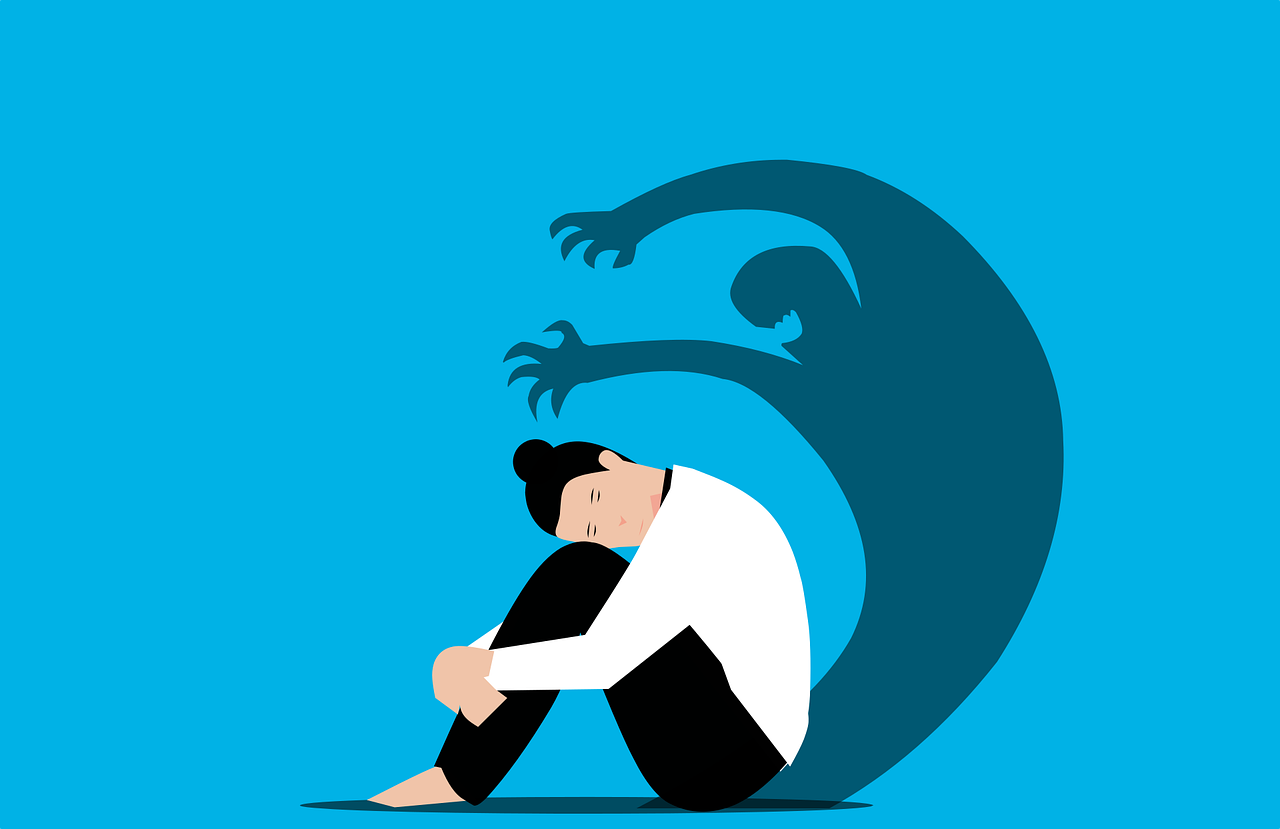When My Anxiety is Afraid, I Hug it to Death
It’s time to embrace a new paradigm for treating chronic anxiety based on the somatic nature of emotional distress

Initially, I was triggered by sharing my writing. Whenever I pressed the publish button, my gag reflex activated and my heart rate skyrocketed as if I’d entered a snake pit.
Experiencing such an outsized reaction to seemingly benign circumstances was deeply unsettling but sadly familiar as I’ve struggled with anxiety my entire life. Seemingly innocuous events will electrify my body’s alarm system and propel me into an absolute tizzy.
Contrary to popular assumption, my anxiety is rarely predicated on negative thoughts but instead on visceral unease. In fact, it usually catches me by surprise making it all the more insidious.
I often used alcohol to self-medicate, so managing my anxiety is crucial to continued sobriety.
I’ve tried therapy and medication to treat my disorder to no avail. Merely reviewing the anxious events was ineffectual and medication basically rendered me comatose. Also, taking benzodiazepines is not recommended for those in sobriety so, even if the medication worked, I still wouldn’t have used it. Since conventional modalities failed, I had all but resigned myself to a life of involuntary agitation.
However, when I started writing, my passion outweighed my defeatist attitude so I took on the role of wellness advocate and actively sought alternative solutions to traditional psychiatry.
After much research, I learned that talk therapy alone is wholly inadequate to treat anxiety as it fails to account for the hidden emotions stored in the body. Medication is similarly superficial serving as a facile bandaid for underlying symptoms.
Armed with this knowledge, I applied techniques based on the modern paradigm and have experienced remarkable results. I’ll detail my methodology in a future article but let me share what I found.
It’s Not Just All in Your Head
Traditional psychiatry supposes that anxiety arises in the brain, so proper treatment requires managing your thoughts. However, more holistically-minded practitioners assert that anxiety is foremost a maladaptation of the body.
In his book Anxiety Rx, physician and neuroscientist Russell Kennedy suggests that thoughts are merely “brain droppings” until assigned an emotional value. Once assigned, the level of value determines the severity of the response.
High-value emotions arising from unsettling events galvanize the limbic system by triggering the fear-based center of the brain, the amygdala, to dispatch a distress signal to the hypothalamus. This prompts the release of stress hormones such as cortisol and adrenaline into the bloodstream which elevate your heart rate, redirect blood flow to the limbs, and raise blood sugar levels to support the fight-or-flight response.
The emotions and corresponding physical alarm are jointly encoded as a somatic memory that calcifies the pain body's discomfort.
As a survival tactic, we manufacture thoughts to reinforce the somatic memory and since the thoughts precede the physical alarm, they become inextricably linked in our brains. However, while mental chatter can exacerbate feelings of distress, it is not a necessary prerequisite.
Kennedy contends that those with chronic anxiety had formative experiences so distressing that all unwanted feelings indicate danger. Therefore, current experiences that elicit an undesirable emotion induce panic irrespective of any relation to the past.
As physician Ellen Vora identifies in her book The Anatomy of Anxiety:
Anxiety is not what’s wrong with you — it is your body and mind fiercely alerting you to the fact that something else is wrong.
Therefore, controlling anxiety requires neutralizing the emotional value of the somatic memory by delving deep into the psyche.
The Chains That Bind
According to Carl Jung, an individual’s psychological processes are housed in the psyche, the conscious and unconscious aspects of the mind. The fulcrum of consciousness is the Ego which mediates between the external world and the unconscious by integrating sensory perceptions with thoughts and feelings.
On the one hand, the Ego is essential to survival allowing us to navigate everyday reality. Without it, we fall prey to the vicissitudes of our external environment, unable to make decisions for our greatest benefit.
On the other hand, it can be the snare that holds us hostage.
Since it prioritizes personal survival above all else, the Ego is hypervigilant and tends to overidentify with negative stimuli. When sufficiently overwhelmed by traumatic events, it relegates the resulting emotions to the unconscious shadow, the hidden repository for all unprocessed psychological information. This sequesters the emotions from conscious awareness requiring deliberate action to access and transcend.
Anxiety is essentially a weaponization of the Ego — a mechanism to shield us from the threat of pain.
To combat it, we must fasten a similarly formidable weapon of compassion. After all, children aren’t afraid of the dark because there is no light. They are afraid because they don’t feel safe. Similarly, the Ego wants to feel protected which is only achievable through acts of tenderness, not hostility.
All You Need is Love
I grew up in a rather tumultuous household so my limbic system is particularly overactive. The chaos elicited perpetual anxiety as I continuously braced myself for unrest. My Ego quickly learned the art of suppression, cultivating the protective habit of burying all unwanted sensations.
My childhood depression further heightened my Ego’s maladjustment.
I was raised in a conservative Indian community and family that valued conformity over authenticity, so I absorbed the message that divergent traits are disgraceful, particularly mental illness.
As a result, I engaged in subterfuge and crafted a suitable disguise for my perceived defect. This bred profound feelings of shame and inadequacy which my Ego promptly concealed. The possibility of exposure further heightened my baseline anxiety, ensuring I never dropped the mask.
Unmasking myself through my writing frightened my Ego to the point of distress. The anxiety was a warning sign of impending shame that my mind simply refused to process.
Finally recognizing the source of my panic, I immediately assumed a posture of kindness and, for the first time in my life, heard my Ego’s cry for help.
It became clear that if I wanted to write undisturbed and stay sober, I could no longer strong-arm my anxiety into submission. I needed to surrender and feel my Ego’s pain.
In an upcoming article, I’ll share the exact techniques I used to do just that.







It’s so interesting that even when we create beliefs for what seems like our benefit, they end up limiting our reality. I learned how to differentiate between when my ego is trying to get me to believe something vs when my intuition is. If it’s my ego, I say thank you for trying to protect me but I’ve got this and if it’s my intuition I accept the belief. After you do this for a while, it starts getting really easy to spot egoic thoughts vs soul-driven thoughts.
This resonates so much with my own experience. I used IFS to deal with my parts but while using different language it’s essentially the same in that the answer has been extending deep compassion and love to the parts of my psyche that were developed to keep me safe. Congratulations to you for learning to have love and compassion for yourself. It’s amazing how hard that can be. ❤️